In the early days of his presidency, Ebrahim Raisi’s top priority was fighting Iran’s fifth and deadliest wave of COVID-19. More than 38,000 new cases and 400 deaths were reported on August 5, the day that he took office. Three days later, Raisi set an example by publicly receiving his first dose of the CovIran Barekat vaccine, the first domestic vaccine.
“Public vaccination is an unavoidable necessity and one of the priorities of the government so that we can increase the public resistance of the people against this virus and its possible mutations,” he said.
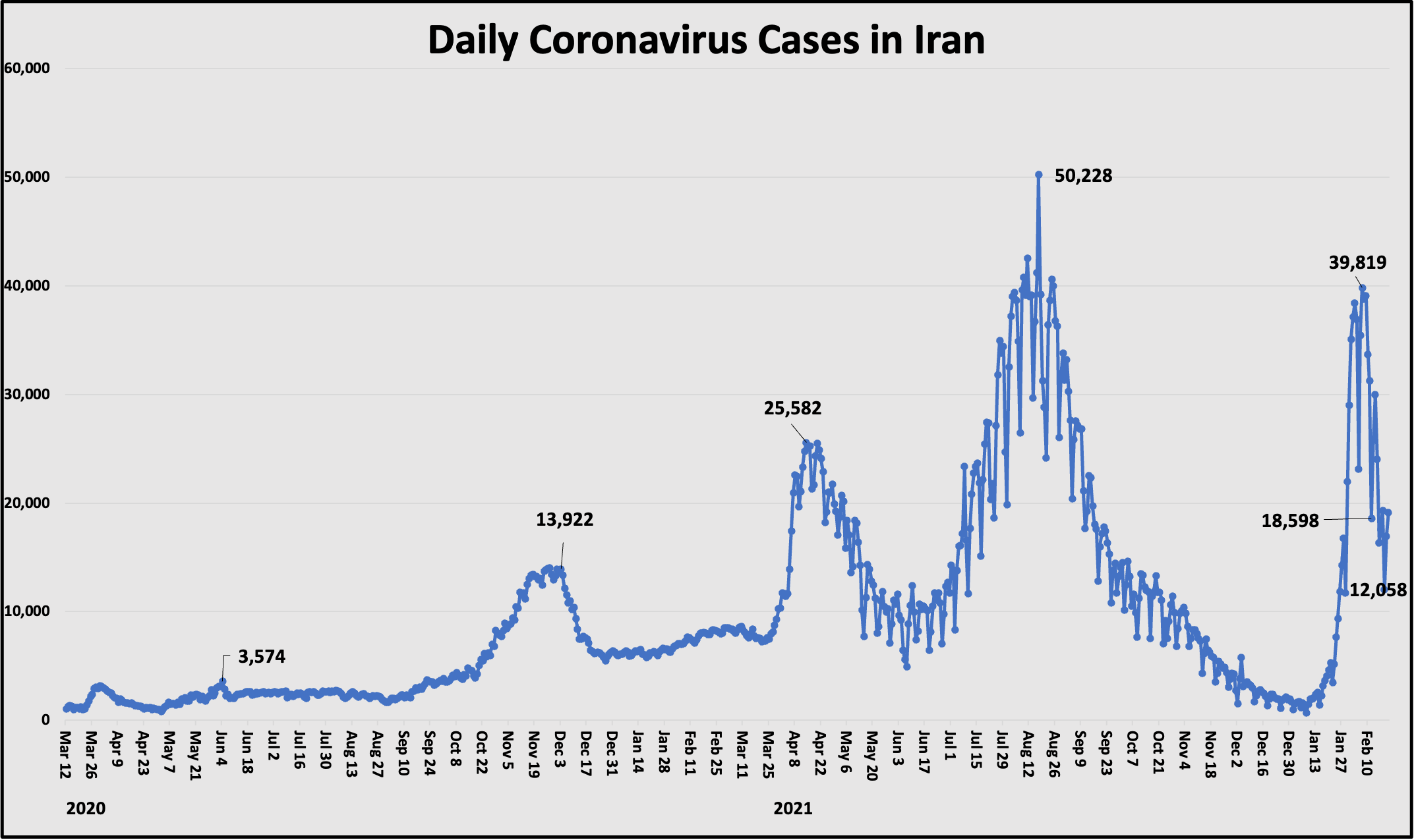
The government took aggressive measures to stem the spread of the highly contagious Delta variant. “The reduction of travel is one of the central issues in the process of controlling the virus, so travel and traffic must be significantly reduced in the next 10 days,” Raisi warned on August 13.
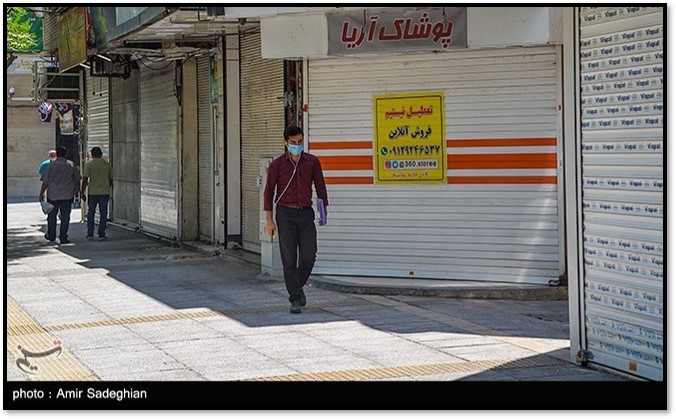
The government followed up on that warning by imposing a national lockdown for six days from August 15 to 21. All non-essential government offices and businesses—including bazaars, markets, restaurants, gyms and movie theaters—were closed. The government also banned nearly all road travel from August 15 to August 27. Only emergency vehicles and trucks carrying food and essential goods were exempted.
The government also tried to limit the spread of infections at rituals during the Islamic holy month of Muharram, which started on August 10. Iran’s predominantly Shiite population traditionally mark the month with theater performances and ceremonies mourning the death of Hussein ibn Ali, the third imam of Shiites and the Prophet Muhammad's grandson.
Authorities initially allowed gatherings indoors if they were held at 25-percent capacity and observed social distancing. But the Interior Ministry banned all indoor events and street processions only a day after Muharram began, after videos surfaced of packed events with unmasked worshippers. “We strongly believe that these mourning ceremonies can have a positive effect on the soul and spirituality of society and people's lives,” Raisi said on August 13, “but observing health protocols in mourning ceremonies is necessary and preserving the lives of the people is a priority.”
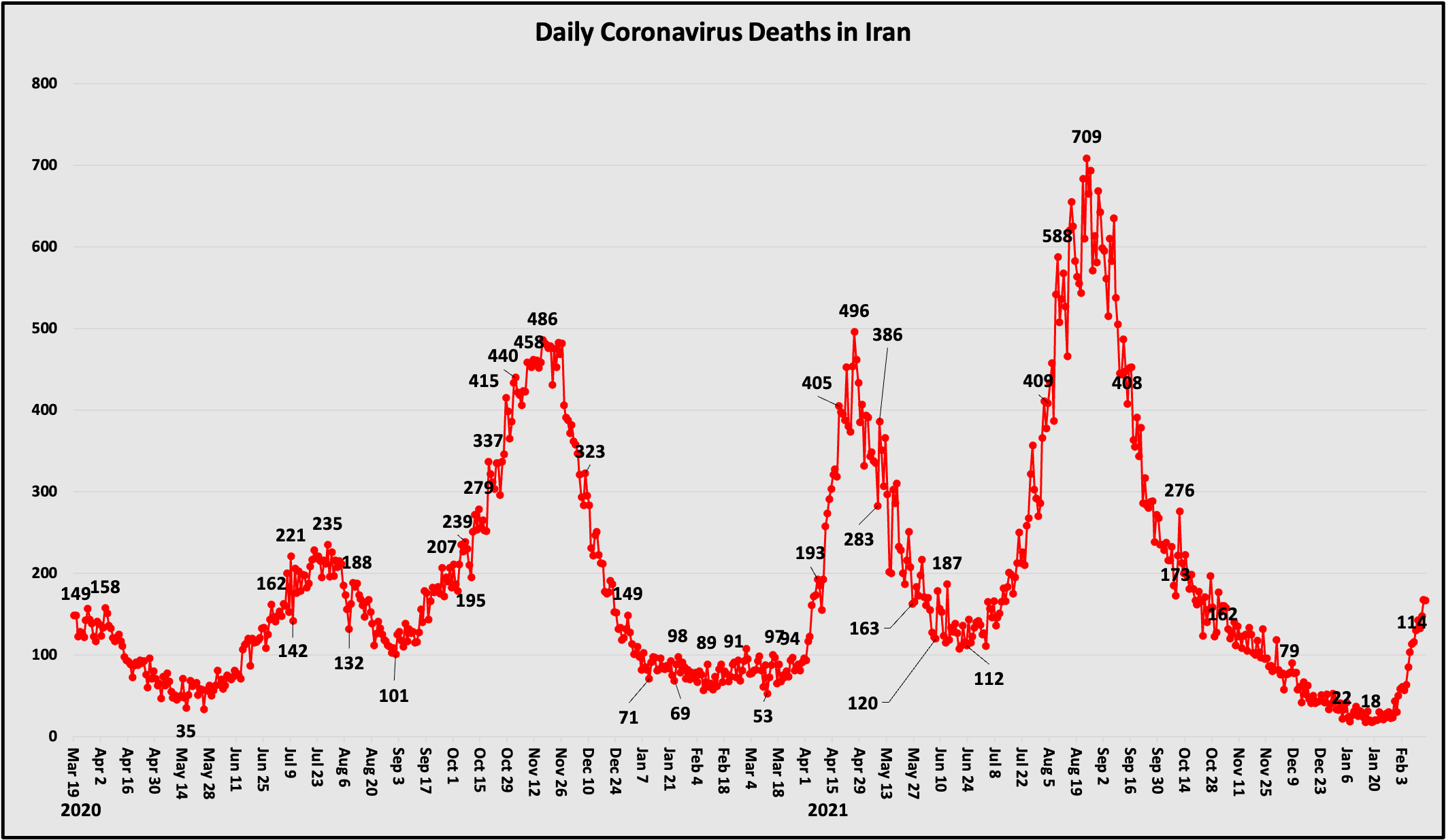
The fifth wave peaked in August for daily deaths and daily cases, according to government figures. On August 24, 709 people died—43 percent more than the previous peak of 496 deaths on April 26. On August 17, Iran recorded 50,228 new cases, nearly double the previous peak of 25,582 cases on April 14 (Frontline doctors in four major cities, however, told The New York Times that the real numbers of daily deaths and infections were significantly higher than government tallies.)
The daily death and case rates trended downward as Iran ramped up vaccination efforts. By September 26, more than 15 million people, or some 18 percent of the population, had received two shots. When Raisi took office, only 3 percent of the population was fully vaccinated.
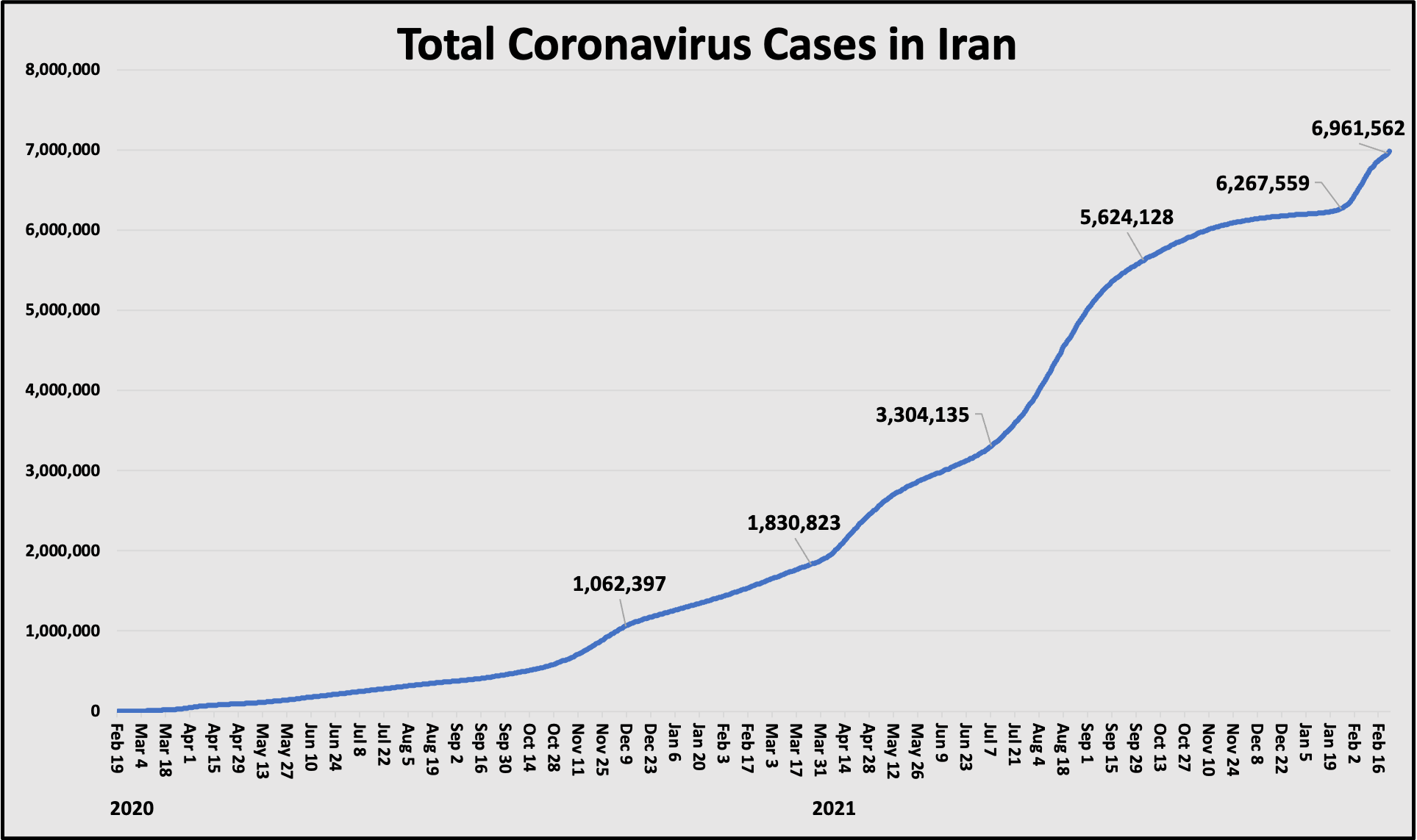
Iran increased imports of vaccines and expanded domestic vaccine production. On September 28, a customs official said that Iran had received 73 million doses from abroad. China, which provided more than 63 million doses of Sinopharm, was by far the biggest source of vaccines. Russia and Japan were also key providers.
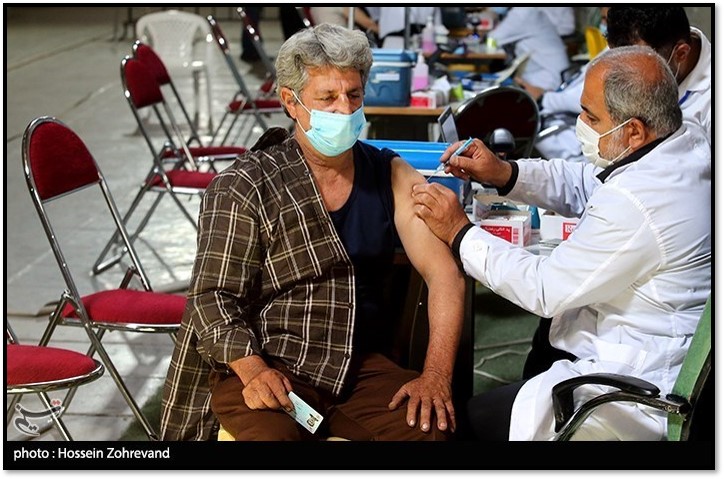
Iran cleared the way for importing vaccines developed by American and British companies. At the beginning of 2021, Supreme Leader Ayatollah Ali Khamenei banned the import of American-made and British-made vaccines. But he appeared to soften his position on August 11. “Corona vaccines must be accessible for all people from any possible way, be it domestic production or through importing,” he said in a televised speech.
On August 15, the health ministry clarified that AstraZeneca, Moderna and Pfizer vaccines could be imported as long as they were not produced in the United States and Britain. The Pfizer and Moderna vaccine had been fetching as much as $1,350 a dose on the black market. On September 16, Iran approved use of the single-dose Johnson & Johnson vaccine. A customs official said that a shipment of 10 million Johnson & Johnson and Pfizer vaccines was due to arrive the week of September 27.
Iran marked several milestones in developing its own vaccines:
- On August 7, the Spicogen vaccine—developed jointly by Iran and an Australian pharmaceutical company—entered the third phase of human trials with 17,000 volunteers.
- On August 10, the Razi Institute said that its Razi CovPars vaccine, Iran’s second domestically-produced vaccine, demonstrated 80 percent effectiveness in the second phase of human trials.
- On August 22, Major General Hossein Salami, the commander of the Islamic Revolutionary Guard Corps (IRGC), announced that the Noura vaccine, developed by the IRGC-affiliated Baqiyatallah University of Medical Sciences, had entered the second phase of clinical trials.
- On September 8, the Iran Pasteur Institute announced that the PastoCoVac vaccine, jointly developed with Cuba, had passed its clinical test on adolescents and children.
- On September 13, the Fakhra vaccine, Iran’s third domestically-produced vaccine, commenced its third clinical trial with 40,000 volunteers.
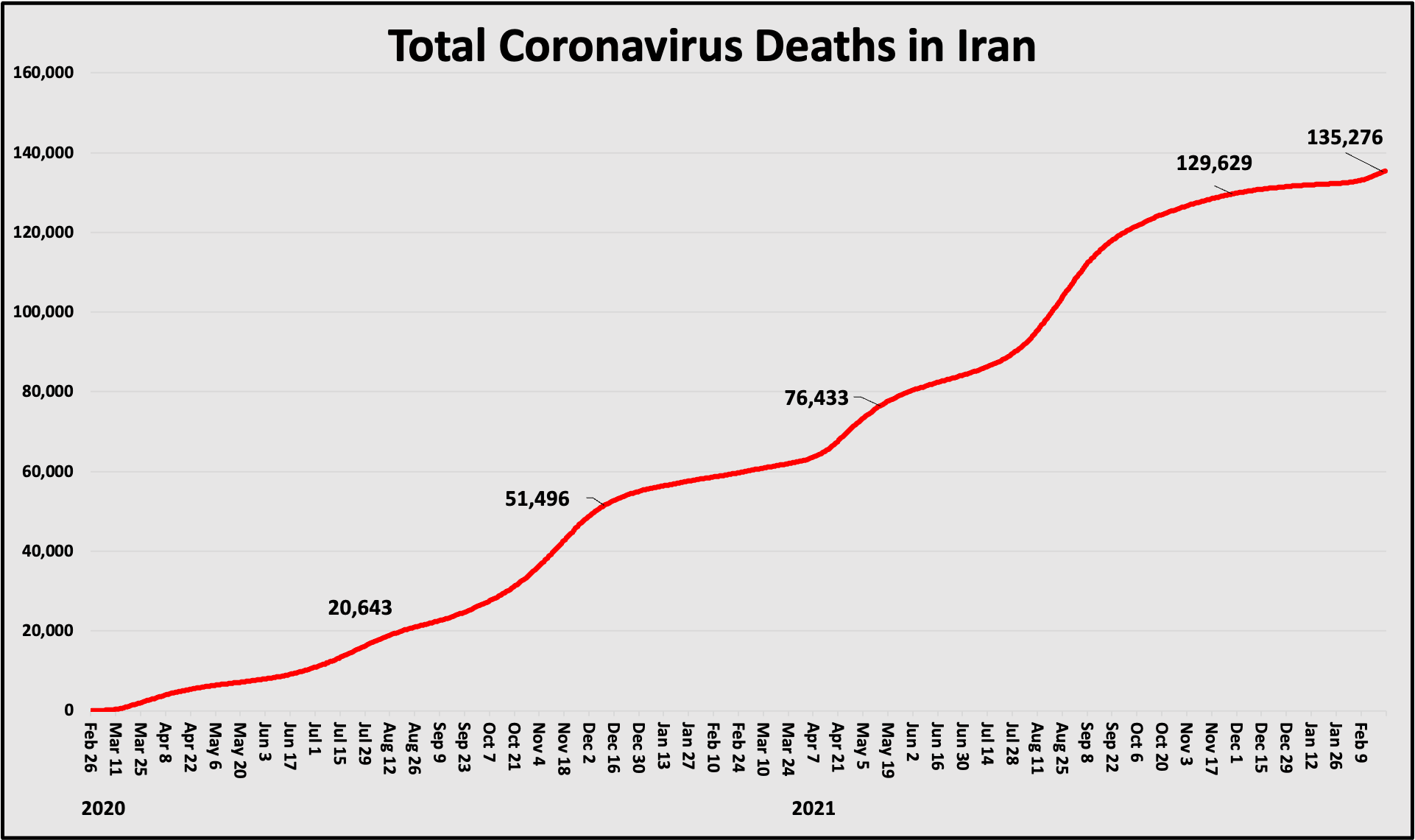
A degree of normalcy began to return to Iran as the vaccination rate increased and the number of new cases decreased. On September 19, museums in Tehran and other cities no longer designated as red zones for transmission reopened to the public for the first time since May 2020. Iran’s museums are popular: in 2019, the country’s 746 museums had attracted 21 million visitors. “We are absolutely delighted, and we think the people are too because they were fed up with staying home, and visiting museums improves their mood,” the director of Iran's museums, Mohammad-Reza Kargar, told AFP.
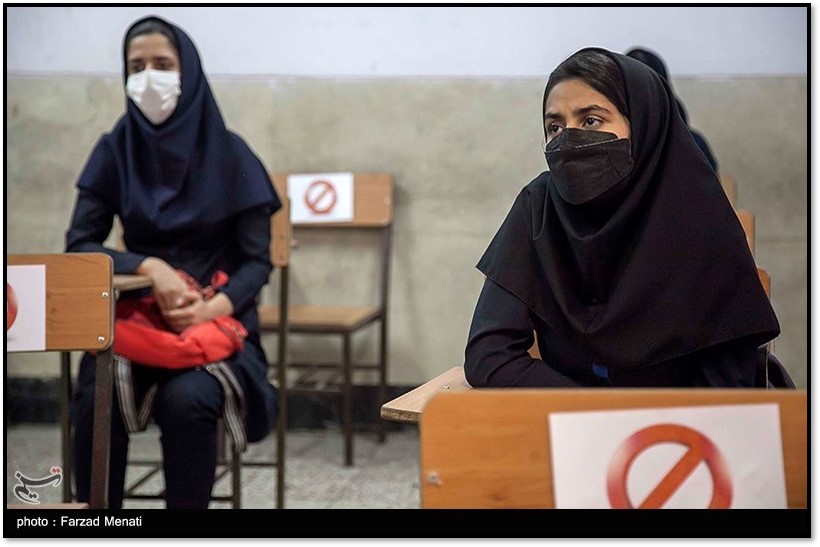
Iran started vaccinating youth aged 12 to 18 with the Sinopharm vaccine from China on September 19, encouraging authorities to relax restrictions on in-person learning for some 15 million students for the new school year that began on September 25. The public school system planned a gradual reopening that combined distance learning and in-person instruction, especially for larger schools. At a ceremony marking the start of the school year, Raisi thanked “all the women and mothers who played the role of teachers in homes for the children” after schools were closed in February 2020. The following are key developments after Raisi took office.
Timeline:
Week 77: August 1 – August 7
On August 1, an additional 200,000 doses of the CovIran Barekat vaccine were delivered to health ministry, according to Setad. The delivery raised the number of total CovIran Barekat vaccines in government hands to 1.5 million. The Iranian Red Crescent Society (IRSC) imported another 1.12 million vaccines into Iran.
On August 2, Iran reached another all-time high of new COVID-19 infections, with more than 37,000 cases reported. Khamenei ordered the government to take all "necessary measures" to contain the Delta variant outbreak, including consideration of a two-week lockdown of the entire country. Iran received 1.1 million doses of vaccines from China out of a planned delivery of 2.2 million doses.
On August 4, Iran hit another record high of new infections; more than 39,000 new cases of the coronavirus were recorded.
On August 7, the Spicogen vaccine, developed jointly by Iran and an Australian pharmaceutical company, entered the third phase of human trials. The vaccine was 70 percent effective against the virus in its second phase of trials, the Tehran Times reported.
Week 78: August 8 – August 14
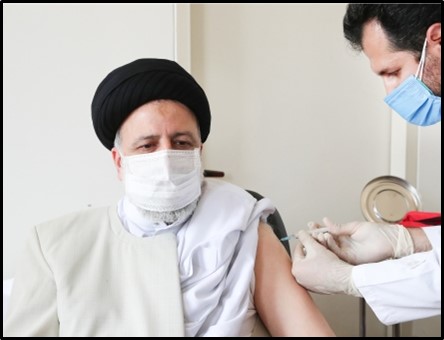
On August 8, President Ebrahim Raisi received his first dose of the CovIran Barekat vaccine and encouraged vaccine manufacturers to "accelerate" production. "Public vaccination is an unavoidable necessity and one of the priorities of the government so that we can increase the public resistance of the people against this virus and its possible mutations," he said after receiving his shot.
Iran has sufficient foreign currency reserves to import COVID-19 vaccines, the Central Bank of Iran (CBI) said. CBI Governor Akbar Komeijani told IRIB that all bank employees would receive the second dose of the vaccine next month.
The IRSC imported another 1.11 million doses of the coronavirus vaccine, state-run IRNA reported.
On August 9, Iran recorded new daily highs for infections and deaths, the health ministry reported. More than 40,000 new cases were recorded and 588 Iranians died from the coronavirus. “Every two seconds one person gets infected in Iran and almost every two minutes one person dies from the coronavirus,” state TV reported.
Raisi urged "maximum observance" of health protocols during the Islamic holy month of Muharram. Stadiums and open air buildings should cooperate with the government to organize mourning ceremonies for Hussein ibn Ali, the third imam of Shiite Muslims, Raisi told his cabinet.
Interior Minister Abdolreza Rahmani Fazli met with provincial governors to discuss the health situation, state-run IRNA reported. “We are both concerned about the (health) protocols and the significance and respect for Muharram rituals,” he said.
Hospitalizations due to the Delta variant were twice as high as during the fourth wave of the pandemic (which ran from March to May 2021), Deputy Health Minister Ghasem Janbabaei said. He claimed that the current fifth wave would be the last Iran suffered due to increasing vaccination rates, Tasnim News Agency reported.
On August 10, President Raisi issued new orders aimed at containing the coronavirus, including increasing the supply of oxygen, reviewing existing health protocols and providing unlimited foreign reserve currency needed to import vaccines. He also instructed the Government Economic Coordination Headquarters to help distribute medicine and medical equipment to people across the country. He visited the COVID-19 ward of Imam Khomeini Hospital in Tehran.
The Razi CovPars, Iran's second domestically-produced vaccine, demonstrated 80 percent effectiveness in the second phase of human trials, Iran Front Page News reported. The Razi Institute, the pharmaceutical company developing the vaccine, planned to produce 15 to 20 million doses by March 2022, a company spokesperson said.

On August 11, Supreme Leader Khamenei urged the government and insurance companies to provide free COVID-19 testing for all Iranians. "Today, it is not available for everyone," he said in a televised speech. "There are problems. It has costs for people. It has heavy costs for some.” He ordered the military to do whatever is necessary to contain the pandemic. "This disease has gone wild not only in Iran, but almost all over the world," he said. "As the disease, the virus, or the enemy takes on a new form, we must change our defense form and our method."
Khamenei accused Western governments of breaking promises to sell vaccines to Iran. He urged the government to boost domestic production as well as vaccine imports to "provide the people with the vaccine in whatever way possible." The supreme leader added that Muharram mourning ceremonies should be carefully organized to prevent the spread of the virus. "We need these ceremonies...but they should be held with utmost care and by observing all protocols," he said.
President Raisi instructed Foreign Minister Mohammad Javad Zarif to negotiate increased import of vaccines from abroad on an accelerated timeline.
Iran would soon administer one million vaccines per day, Health Minister Saeed Namaki claimed. But Iranians were frustrated with the low supply of foreign vaccines, the Associated Press reported. Shots of Moderna and Pfizer vaccines sold on the black market for as much as $1,350 a dose. Russia had only delivered one million out of 60 million promised shots, while China has sent 10 million shots and Japan nearly three million.
On August 12, the Imam Khomeini Hospital Complex in Tehran had no more beds in its ward for coronavirus patients, State Radio Iran (VIRI) reported. The government claimed that it had secured 40 million additional doses of imported vaccines for the fall, state-run IRNA reported. The IRCS delivered 1.1 million additional doses of the vaccine to Imam Khomeini International Airport in Tehran.
On August 13, President Raisi urged Iranians to reconsider travel plans to prevent the spread of the Delta variant. “The reduction of travel is one of the central issues in the process of controlling the virus, so travel and traffic must be significantly reduced in the next 10 days,” he told the National Coronavirus Task Force. The president also asked state media to help keep Iranians well-informed of health protocols and the spread of the virus.
The true death toll from COVID-19 was likely closer to 1,000 per day, The New York Times reported.
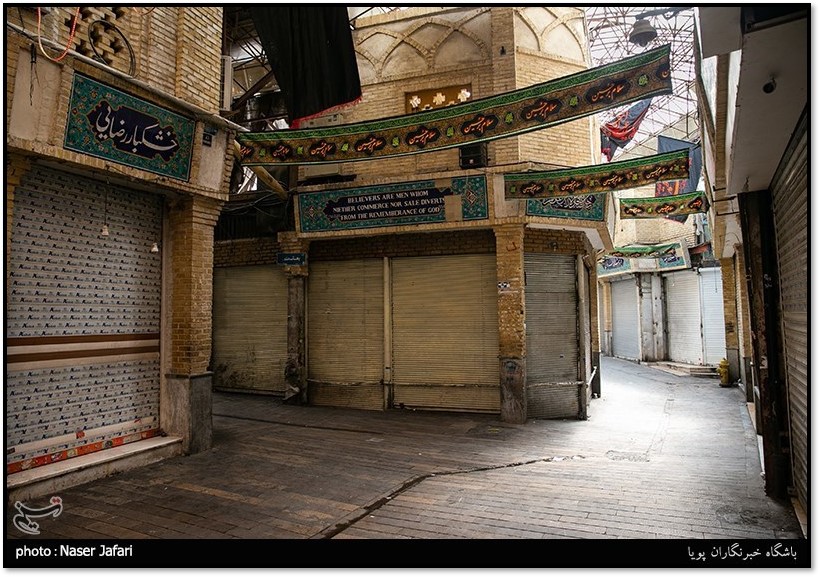
On August 14, Iran imposed a six day lockdown of the entire country until August 21. The lockdown applied to "all bazaars, markets and public offices, as well as movie theaters, gyms and restaurants in all Iranian cities," the Associated Press reported. The government also banned all road travel until August 27, except for vehicles delivering essential goods or medical services. "This traffic ban will be very strictly imposed," the spokesman for the National Coronavirus Task Force said.
President Raisi said that Iran had secured 30 million doses of the COVID-19 vaccine from abroad but that 60 million would be required.
The IRSC denied that it had diverted COVID-19 vaccines meant for Iran to Venezuela, the Tehran Times reported. The denial was in response to a viral video showing crates of Sinopharm vaccines at Imam Khomeini Airport in mid-transit, an IRSC spokesman said. “When the consignment of another country arrives at Imam Khomeini Airport, this is a kind of cargo transit, and investigations have shown that this consignment was transferred from China to Iran to be sent to Venezuela," he said.
Security forces arrested six Iranians who were planning to sue the government for mishandling its response to the pandemic. Four were lawyers and two were civil society activists, according to the New York-based Center for Human Rights in Iran (CHRI). Their phones and personal belongings were confiscated upon arrest. One of the lawyers, Leila Heydari, was released the next day.
Week 79: August 15 – August 21
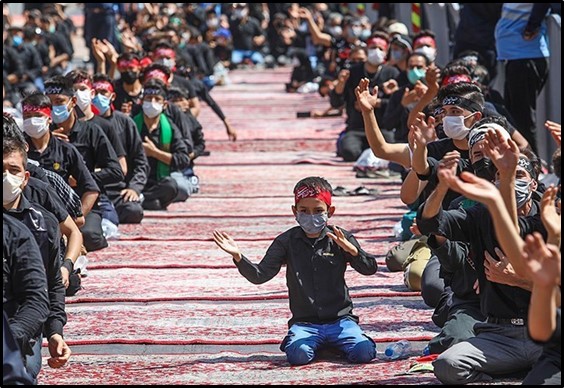
On August 16, Iran hit a record high 655 deaths from the coronavirus and could reach 800 per day in the coming weeks, Reuters reported. The government issued permits for U.S.-made Pfizer and Moderna vaccines despite an earlier ban by Supreme Leader Khamenei. Mohammad Reza Shanesaz, the head of the Iranian Food and Drug Administration, said that the vaccines came from "permissible sources."
On August 17, Iran received an additional 700,000 vaccine doses from China, according to the Iranian foreign ministry. Beijing had sent a total 1.55 million doses to Iran since February, said Reza Zabib, the director general of the Asia-Pacific Department.
Iran had administered 12 million doses of China's Sinopharm vaccines, four million doses of the Oxford-AstraZeneca vaccine, one million doses of the domestically-produced CovIran Barekat and fewer than a million doses of Russia's Sputnik V and India's Covaxin vaccines, according to the head of virology research at the Pasteur Institute in Tehran.
On August 18, President Raisi sided with Beijing over its rejection of a second WHO probe into the origins of the coronavirus. "The politicization of the source of the COVID-19 pandemic is a serious threat to global health and is an example of some countries' efforts to isolate China," Raisi told Chinese President Xi Jinping in a phone call. Xi promised to do his "utmost to deliver the vaccine to Iran and help Iran overcome [the] coronavirus."
On August 19, the IRSC pledged to double the number of vaccines it imported in the following month. Karim Hemmati, president of the IRSC, said that the organization had been importing doses from China and would continue to do so. More than 100,000 Iranians have died from COVID-19 since February 2020, the health ministry reported.
On August 20, Iran expanded eligibility for the COVID-19 vaccine to all mothers working in health care or pregnant women over the age of 35. Women with spouses working in coronavirus hospital wards were also eligible, state-run IRNA reported. President Raisi told the National Coronavirus Task Force that Xi had promised to accelerate shipments of vaccines to Iran.
Week 80: August 22 – August 28
On August 22, IRGC commander Major General Hossein Salami announced that the Noura vaccine, developed by the IRGC-affiliated Baqiyatallah University of Medical Sciences, had entered the second phase of clinical trials.
On August 23, the national Union of Medicine Importers announced that Iran would receive 20 million doses of the previously-banned Pfizer vaccine by the end of 2021. The Iran Customs Administration said that the country had already imported 20.1 million Sinopharm vaccines from China, 2.9 million AstraZeneca vaccines from Japan, and 1 million Sputnik vaccines from Russia – in addition to smaller batches of vaccines from South Korea, India, and Italy – since February 3, 2021.
On August 24, Iran reported a record daily high of 709 deaths, raising the total death toll to 103,357.
On August 26, Hossein Amir-Abdollahian, the newly confirmed foreign minister, said that the foreign ministry had established a special headquarters dedicated to expediting the import of vaccines. On the same day, Iran received its seventeenth vaccine shipment, which contained 1.1 million doses. Iran had received a total of 20.39 million doses from abroad.
On August 28, Defense Minister Mohammad Reza Qaraei Ashtiani announced that the Iranian Fakhra vaccine reached its final phase of testing and would be mass-manufactured in the near future.
Week 81: August 29 – September 4
On September 2, Iran received its third shipment of vaccines through the COVAX Facility program.
On September 4, the Iranian health ministry refuted media reports which alleged that Iran had produced and exported two million doses of the Sputnik vaccine to Russia each month. “The transfer of any kind of vaccines into and out of the country is subject to permission by the [Iranian] Food and Drug Organization, and such a permit has not been issued, so far, for coronavirus vaccines,” said Kianoush Jahanbakhsh, the spokesman for the Iranian Food and Drug Organization.
In a live television interview, President Raisi, lauded domestic efforts to produce vaccines. But he acknowledged that Iran needed doses from abroad as well. He announced that Iran would import 40 million by mid-September 2021.
Week 82: September 5 – September 11
On September 5, President Raisi received his second dose of the CovIran Barekat vaccine. Meanwhile, the Iranian Red Crescent Society received its eighteenth consignment of COVID-19 vaccines, containing five million doses.
Major General Hassan Firouzabadi died from COVID-19 at age 70. He was appointed by Supreme Leader Khamenei to head the armed forces chief in 1989 and held the position until 2016.
On September 7, Austrian Foreign Minister Alexander Schallenberg tweeted, “I am pleased that Austria is supporting the people of #Iran with 1 million doses of #AstraZeneca #vaccines against #COVID19.”
The first half of a 1million doses donation of AstraZeneca vaccine from Austria was welcomed by an Austrian Embassy team led by CdA Barbara Grosse at IKA.Austria is convinced that joint efforts are needed to counter the global Covid19 crisis.Nobody is safe until everybody is safe pic.twitter.com/CP9J0XirAA
— Austrian Embassy Tehran (@AustriainIran) September 8, 2021
On September 8, the director of the Iran Pasteur Institute announced that the PastoCoVac vaccine, jointly developed by Iran and Cuba, passed the clinical test on children in Cuba. The vaccine was subsequently cleared for use on Iranian children.
On September 9, President Ebrahim Raisisaid that his administration would fight the latest COVID-19 surge in four ways: supporting domestic vaccine production; importing more vaccines; accelerating vaccination programs; and implementing an updated “Martyr Soleimani” plan, in which thousands of volunteers go door-to-door screening people for COVID-19.
The health ministry said that the worst phase of the ongoing COVID-19 wave had passed.
On September 11, the Iranian Red Crescent Society said that Iran would soon vaccinate students aged 12 to 18.
Week 82: September 12 – September 18
On September 13, the Health Minister Bahram Einollahi said that Iran’s Fakhra vaccine passed to its third clinical trial with 40,000 volunteers.
Protestors gathered outside of the Interior Ministry to condemn mandatory vaccinations.
The Foreign Ministry said that Iran will remove any “red lines” for importing COVID-19 vaccines, including those developed by American companies Pfizer and Moderna.
On September 14, the Health Minister Einollahi said that Iran will import 40 million doses of COVID-19 vaccine between September 23 and October 22, 2021, the Iranian month of Mehr.
On September 15, a health official said that nearly 40 percent of Iranians had received their first dose of a COVID-19 vaccine.
On September 16, Mohammad Reza Shanehsaz, the head of Iran’s Food and Drug Administration, announced that two more vaccines were approved for use in Iran, the Johnson & Johnson vaccine developed in the United States and Russia’s Sputnik Light. Both were single-dose vaccines.
Week 83: September 19 – September 25
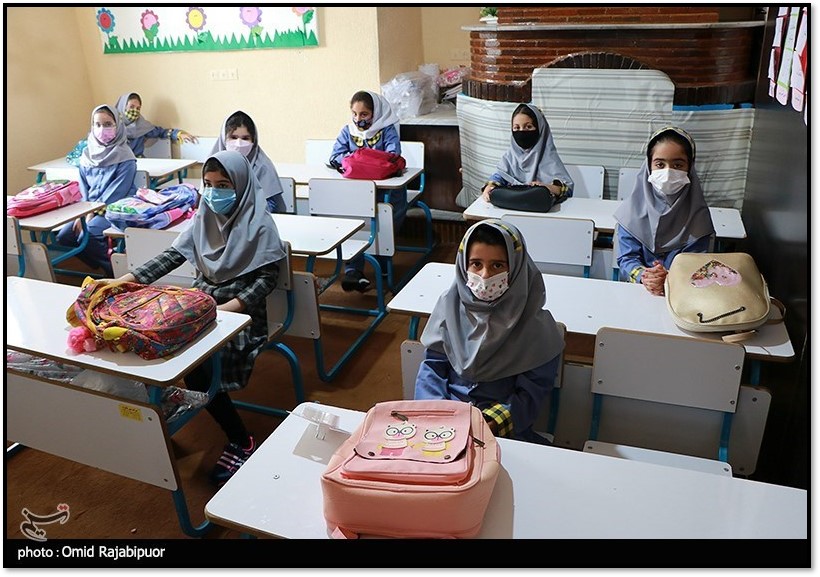
On September 21, President Ebrahim Raisi said that U.S. sanctions on Iran amid the COVID-19 pandemic, “especially in the area of humanitarian items,” amounted to an “organized crime against humanity.” In his debut address to the United Nations, Raisi condemned the punitive measures as “oppressive.” Under U.S. law, humanitarian goods are not subject to sanctions, but some U.S. and foreign companies and banks have been reluctant to do business with Iran for fear of running afoul of the complex U.S. sanctions regime.
The Barekat Foundation said that it had delivered six million doses of the domestic CovIran Barekat vaccine to the health ministry.
On September 22, Iranian Foreign Minister Hossein Amir-Abdollahian thanked his Austrian counterpart Alexander Schallenberg for his country’s vaccine donations. The two met on the sidelines of the U.N. General Assembly.
On September 25, Iran kicked off a new school year with relaxed restrictions on in-person learning for some 15 million students. The public school system planned a gradual reopening that combined distance learning and in-person instruction, especially for larger schools.
Week 84: September 26 – October 2
On September 26, the health ministry reported that more than 50 million vaccination doses had been administered. More than 35 million people had received one dose, and more than 15 million had received two doses.
On October 2, Iran announced that more than 62,000 vaccine doses had been administered to Afghan nationals in northeastern Razavi Khorasan province.
Iran alleged that U.S. sanctions were hindering efforts to import vaccines. “The inhumane and illegal unilateral coercive measures have even denied the allocation of COVID-19 vaccines to the Islamic Republic of Iran,” Mohammad Ghorbanpour, first secretary at Iran’s U.N. mission, told a U.N. General Assembly committee. “It is a matter of great regret that certain countries brazenly claim that humanitarian goods are exempt from sanctions – that in itself is a terrible lie.”
Week 85: October 3 – October 9
On October 3, acting Education Minister Alireza Kazemi said that schools would reopen on November 6. Kazemi also stated that kindergartens in yellow and orange-level cities could resume in-person instruction.
On October 5, Deputy Health Minister Mohammad Rez Shanehsaz announced that Iran had received its first shipment of the PastoCoVac vaccine, jointed developed by Iran and Cuba. The first shipment included 6 million doses.
On October 6 and 7, 95 vaccination centers across Tehran were opened for students aged 12 to 18.
Week 85: October 3 – October 9
On October 6, the Iranian Food and Drug Administration issued an emergency authorization for the use of the Spikogen (also “Spicogen”) vaccine, an Iranian-Australian joint research venture.
On October 9, President Ebrahim Raisi urged citizens to follow health protocols and avoid unnecessary gatherings. He acknowledged that the number of daily infections and deaths had decreased but warned that “not following health protocols and normalization are dangerous and can pave the way for a new wave of disease.”
Week 86: October 10 – October 16
On October 11, the Iranian Food and Drug Administration said that, in two weeks, Iran will no longer need additional vaccine imports. But Iran will continue to receive any further deliveries established by extant agreements.
On October 12, Iran’s Ravi Vaccine and Serum Research Institute announced that the third dose of the Razi Cov Pars vaccine - delivered intranasally rather than via injection, unlike the first two doses – could reduce virus transmission by 90 percent.
On October 13, Iran received 400,000 doses of the Sputnik-V vaccine from Russia after months of delays.
Week 87: October 17 – October 23
On October 20, the defense ministry announced that it would cease production of its Fakhravac vaccine, citing insufficient demand. “We are in the process of planning to end production, because who will we sell it to?” Ahmad Karimi, the Fakhravac program director, asked rhetorically.
On October 22, Tehran held the first public Friday prayer service in 20 months.
Week 88: October 24 – October 30
On October 24, Iran received six million doses of the Chinese Sinopharm vaccine. Iran “will keep importing the Sinopharm vaccine,” Iranian Red Crescent Society director Karim Hemmati said.
On October 25, Health Minister Bahram Einollahi said that unvaccinated individuals constituted over 85 percent of deaths from COVID-19. He expressed concern about the potential for a sixth wave due to the segment of the population refusing vaccination.
On October 30, President Raisi directed government ministries, led by the Ministry of Health, to “make plans to reopen schools and universities on November 22.”
Week 89: October 31 - November 6
On November 1, Iranian state television reported that Foreign Minister Hossein Amir Adbollahian had tested positive for COVID-19. But his condition was “good,” and he was able to work while in quarantine, according to Foreign Ministry Spokesperson Saeed Khatibzadeh.
The Iran Customs Administration reported that Iran had cumulatively imported 146,246,308 doses of coronavirus vaccines.
On November 3, the number of cities designated “red” rose to 29. Minister of Interior Ahmad Vahidi urged the public to observe public health protocols to prevent a sixth wave.
Week 90: November 7 - November 13
On November 7, Health Minister Bahram Einollahi attributed the rise in COVID-19 cases among some cities to Iranians failing to observe public-health protocols.
The Food and Drug Administration announced that Iran’s was producing 10 million vaccine doses per month.
On November 11, First Vice President Mohammad Mokhber called on officials to speed up the administration of booster doses. He also urged the public to comply with health protocols.
On November 13, President Raisi called on the Health Ministry to pre-purchase domestic vaccines to support local companies. Advanced orders “can make them more hopeful about continuing and expanding their activities,” he said.
Week 91: November 14 – November 20
On November 20, the health ministry announced that 44 million people – or over half of the 85 million-person population – were fully vaccinated.
Week 92: November 21 – November 27
On November 21, President Raisi ended the nighttime driving ban that had been in place for more than a year in many regions.
On November 23, Mohammad Mehdi Gooya, the head of the Ministry of Health’s diseases management center, said that Iran had outpaced Europe in administering first vaccine doses to individuals over age 12– at 82 versus 64 percent.
Week 93: November 28 - December 4
On December 4, President Raisi urgedIranians to abide by “health protocols and serious monitoring.” But he said that vaccinating young children “should not be done until accurate research and scientific work” has been completed. “The government will refrain from anything that has not been tested and approved,” he added.
Week 94: December 5 - December 11
On December 5, Raisi said that one of his government’s main achievements was the administration of more than 100 million vaccination doses. In a televised interview marking his government's first 100 days in office, Raisi said that more than 100,000 businesses had reopened as a result of vaccination efforts.
The Health Ministry recommended that individuals over the age of 40 receive booster shots.
Week 95: December 12 - December 18
On December 12, Supreme Leader Khamenei thanked nurses for their sacrifices during the pandemic. At an event marking National Nurse Day, he hosted nurses and the families of healthcare workers who had died from COVID-19.
On December 18, Iran received 26,400 doses of the AstraZeneca vaccine from the COVAX Facility.
The Islamic Republic of Iran, as one of the self-financing participant countries of the #COVAX Facility, has received a batch of 26,400 AstraZeneca #COVID19 vaccines on Saturday, 18 December 2021.
— UNICEF Iran (@UNICEF_IRAN) December 19, 2021
🇮🇷🇺🇳😷 pic.twitter.com/wL5EcxaqhX
Week 96: December 19 - December 25
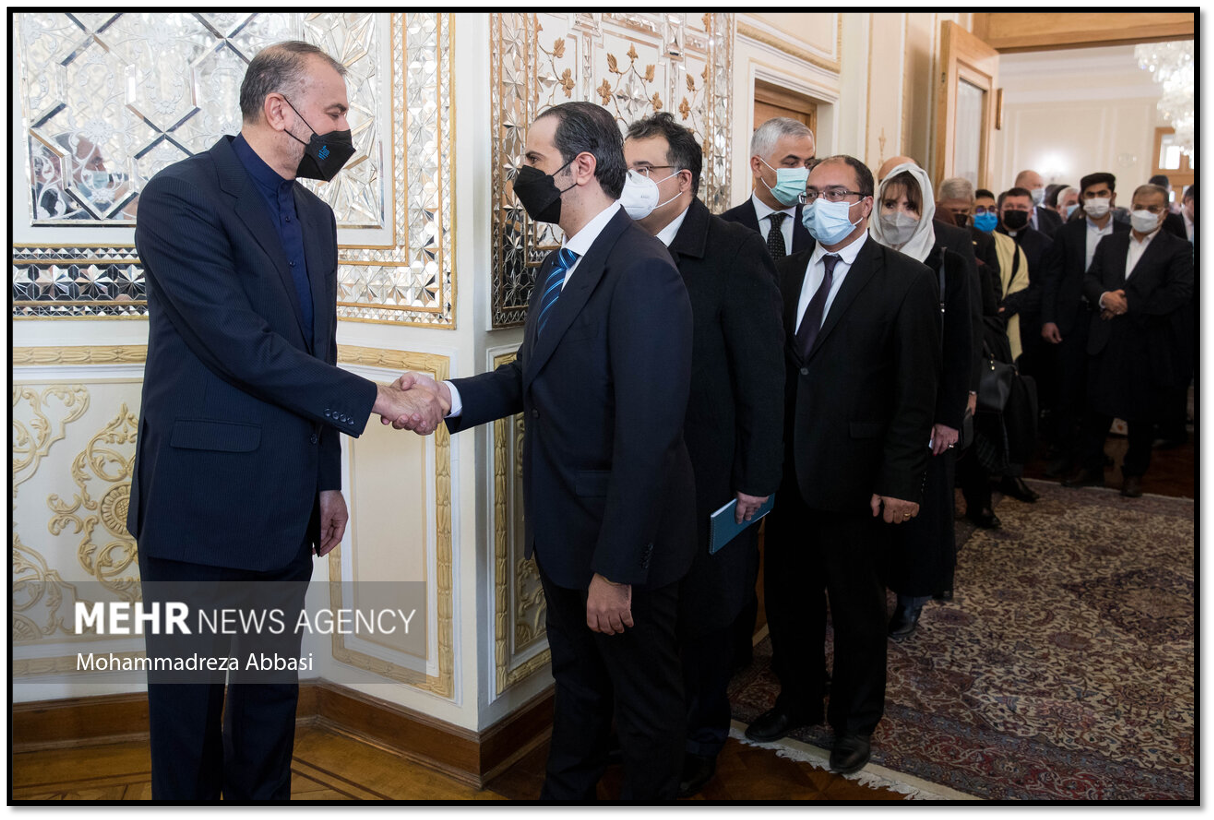
On December 21, Foreign Ministry spokesperson Saeed Khatibzadeh announced the death of Iran’s ambassador to Yemen, Hassan Irloo, from COVID-19. The Saudi-led military coalition fighting the Houthis initially denied Irloo passage out of the country. But Saudi Arabia reportedly relented after Iraq and other regional countries weighed in. Irloo, allegedly a member of the Revolutionary Guards, left Yemen on December 19. But he was severely ill “due to the late cooperation of some countries,” Khatibzadeh said in what appeared to be a reference to Saudi Arabia.
Week 97: December 26 - January 1
On January 1, President Ebrahim Raisi urged the vaccination of incoming Afghan immigrants to prevent the spread of COVID-19 in Iran. Raisi added that “it is necessary for the border provinces to carefully and seriously control the traffic from land, air and sea borders.”
Week 98: January 2 - January 8
On January 2, the Noora vaccine – under development at the Revolutionary Guards-affiliated Baqiyatallah University of Medical Sciences – entered the third phase of human trials. IRGC Commander-in-Chief Hossein Salami received a Noora dose as part of this stage of the trial.
Week 99: January 9 - January 15
On January 15, President Raisi announced that the government would permit the resumption of “sports competitions and exhibitions” with limited spectators. Raisi also urged Iranians to maintain compliance with public-health protocols, especially while utilizing public transit.
The health ministry reported Iran’s first deaths from the Omicron variant. Three individuals - based in the cities of Tabriz, Yazd, and Shahrekord - died from the latest mutation of COVID-19.
Week 100: January 16 - January 22
On January 19, the European Union’s Directorate-General for European Civil Protection and Humanitarian Aid Operations (ECHO) announced the delivery of 2.2 million vaccine doses from Spain to Afghan refugees in Iran - following a request from the Iranian government. The European Commission funded “coordinated the delivery and finances 75% of the costs for transporting the assistance,” according to ECHO’s statement.
Embajador Angel Losada hace entrega al Viceministro de asuntos económicos del Min. de Sanidad de 🇮🇷 de 2,2 millones de vacunas contra la #COVID19 donadas por #España para los refugiados afganos en #Irán a través del Mecanismo Europeo de Protección Civil pic.twitter.com/BtxolK2Kuh pic.twitter.com/kNRTSnsFfu
— España en Irán (@EmbEspIran) January 19, 2022
On January 22, President Raisi urged“mass media and scientific figures” to better convey the necessity and effectiveness of COVID-19 vaccines in order to persuade skeptical Iranians into receiving all three of recommended doses.
Week 101: January 23 - January 29
On January 24, the national COVID-19 science committee announced that Omicron had overtaken Delta and other variants. “Over 50% of transmissions are linked to the Omicron variant, it is safe to say that Omicron has become dominant,” Secretary Masoud Younesian said. “Since early January, we’ve been seeing a 10-12% increase in infections every day.”
On January 26, for a the first time in 47 days, a city was designated red – the highest level of health emergency due to the pandemic.
Week 102: January 30 - February 5
On January 31, Iran canceled in-person parliamentary sessions for two days after 47 of the 290 lawmakers tested positive for COVID-19. Ten were hospitalized for treatment.
The number of cities designated red reached 15. The number of cities designated orange, the second-highest level of emergency, rose from eight to 61.
On February 5, The Pasteur Institute of Iran announced that the PastoCoVac vaccine, a joint research collaboration between Iran and Cuba, was “70 percent effective in preventing infection and 100 percent efficient in preventing death” from the Omicron variant.
Week 103: February 6 - February 12
On February 7, Supreme Khamenei received his third dose of the domestic CovIran Barekat vaccine.
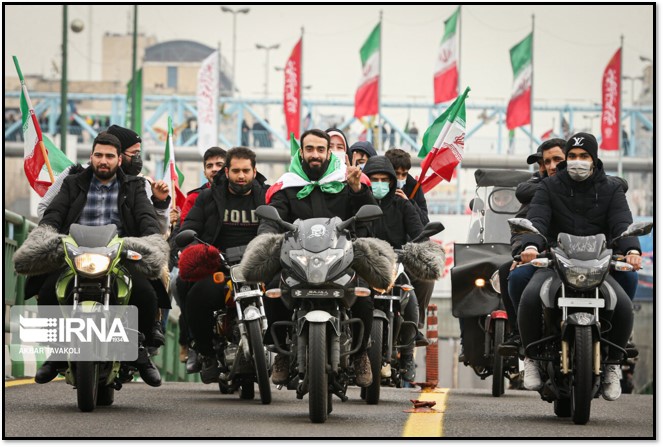
On February 11, Iranians marked the 43rd anniversary of the Islamic Revolution with rallies in some 4,500 cities and towns, although most were outdoor parades of cars, motorcycles and bicycles, with few people participating on the streets. In his televised address, President Raisi praised government efforts to combat the pandemic. “The day we started took office, 700 people were losing their lives every day because of coronavirus. But today, thanks to God Almighty and the help of the people and health officials, the situation is different.”
On February 12, President Raisi urged all executive bodies to insist on holding off “meetings and ceremonies unless necessary.”
On February 20, the education ministry saidthat approximately 76 percent of students - between 12 and 18 years of age - had received a second vaccine dose.
On February 21, state television announcedthat Iran had returned 820,000 vaccine doses donated by Poland upon learning that the AstraZeneca doses were produced in the United States. “After coordination with the Polish ambassador to Iran, it was decided that the vaccines would be returned,” Health Minister Mohammad Hashemi said.
Tess Rosenberg, a research analyst at the U.S. Institute of Peace, and Garrett Nada, managing editor of The Iran Primer, contributed to this report.
Photo credits: All photos via Tasnim News Agency (CC by 4.0)
